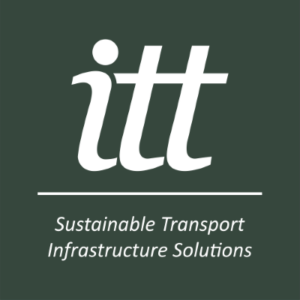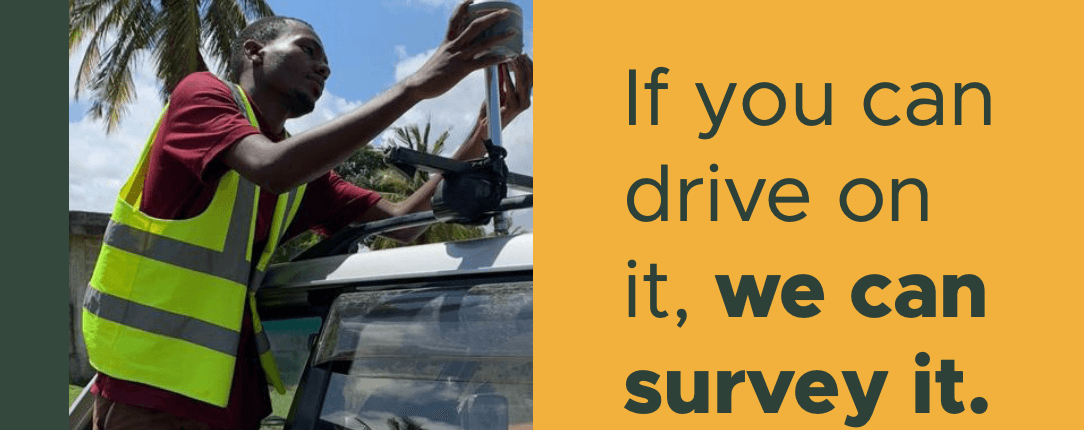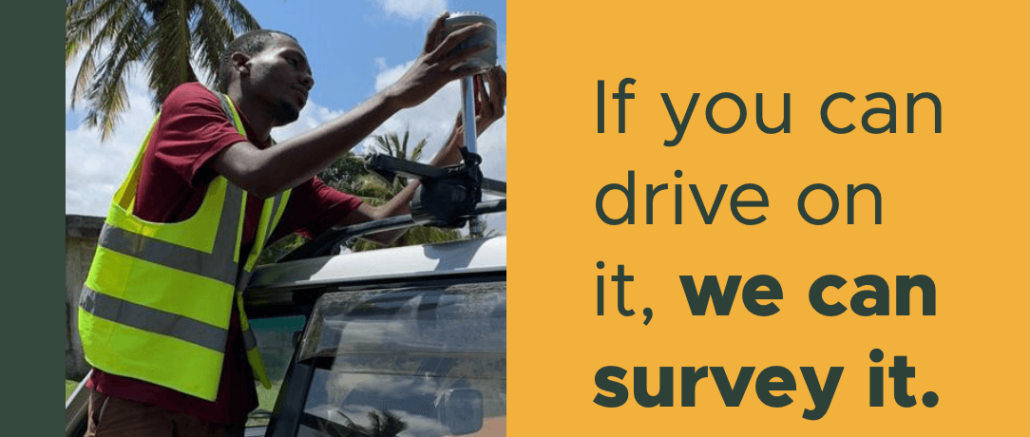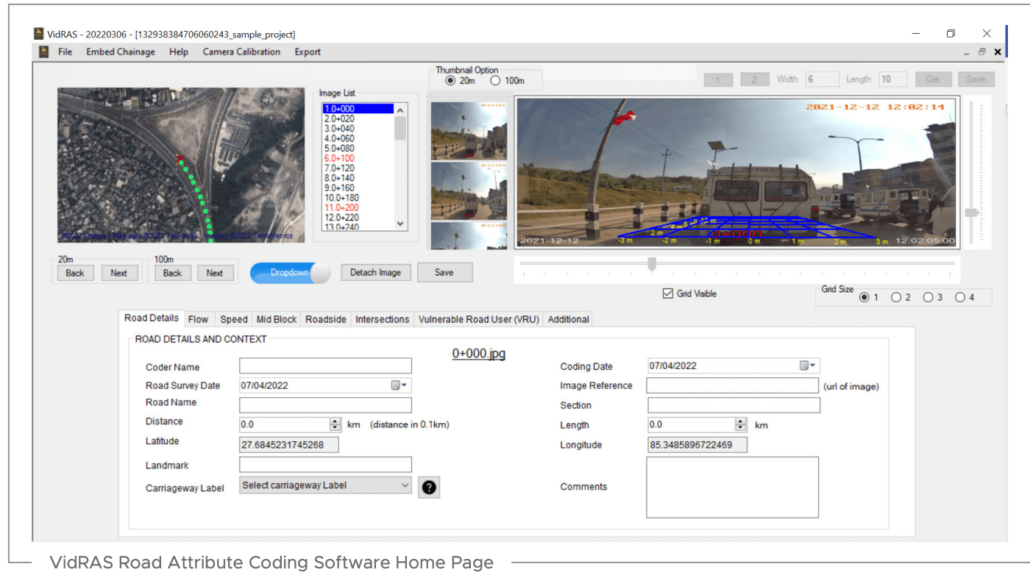VidRAS – ITT’s iRAP accredited Road Safety Inspection System – Q&A
ITT’s VidRAS, an iRAP-accredited Video Road Assessment System, is deployed for road safety surveys. Utilising dashcams and GPS, it accurately collects data to enhance infrastructure safety globally.
More....
In June 2022, ITT’s Road Inspection System, VidRAS, was officially accredited by iRAP for use in undertaking iRAP-specification road safety surveys and road attribute coding. As it now in operation on some of our international projects, we decided to talk to the VidRAS Lead at ITT, Ellen Rogan, to find out more about the system and its development.
Q: Hi Ellen. Please can you explain what VidRAS is?
A: Sure. VidRAS, which stands for Video Road Assessment System, is an iRAP accredited Inspection System, developed by us here at I.T. Transport. We initially developed it for undertaking Road Inventory and Condition Surveys (RICS) over a number of years, but over time the technology has continued to evolve to the point whereby we felt it was ready to be deployed for additional purposes, such as road safety surveying and assessment. With VidRAS, we took the idea a step-further and developed our own iRAP-accredited methodology and software needed to perform road safety surveys and road attribute coding. The road survey and coding data that are collected are then used as part of the process of producing Star Ratings and Safer Roads Investment Plans (SRIP), with the ultimate aim of making infrastructure safer thereby helping to prevent deaths and serious injuries on our roads.
Q: Can you tell us a bit more about what iRAP does and what iRAP Accreditation is?
A: iRAP (The International Road Assessment Programme) was established to help tackle the devastating social and economic cost of road crashes. The work they do is focused on improving the world’s roads to a 3-star or better standard, which is a key way to achieve the UN SDGs target of halving road deaths and injuries by 2030. iRAP accreditation helps ensure that iRAP assessments are performed to the same consistently high level of quality worldwide. As ITT is an accredited practitioner, we are now a part of a market of practitioners /suppliers that are able to bid competitively to provide iRAP-specification services, but also offer our services out privately, whilst ensuring iRAP standards and quality, which is confirmed through our accreditation. You can find out more on their website: https://irap.org/
Q: Why did ITT decide to develop VidRAS and apply for iRAP accreditation?
A: As a company we are very passionate about improving road safety in the countries we work in and have been working on numerous road safety projects over the last decade or so. However, we had found that the availability, cost and reliability of existing road safety inspection systems were a barrier to undertaking the crucial iRAP surveys in the countries we work in. So last year, we made the decision to enhance our road safety offerings produce our own methodology for undertaking road surveys and develop a coding software for road attribute coding. We then applied for iRAP accreditation of this overall Inspection system (VidRAS) and are now deploying the system.
Q: What equipment does the VidRAS survey methodology involve?
A: Our survey methodology for conducting iRAP road surveys involves the use of 3 main pieces of equipment:
- Dashcam – we use a high-spec dashcam which gives the 140-degree field of view needed for conducting these surveys.
- A GPS Rover Unit which is mounted to the roof of the vehicle – we use the South Galaxy G1 RTK GNSS receiver and we do recommend that if surveying in cities or built-up areas that 2 devices are used, with 1 acting as a base station and 1 attached to the vehicle.
- The final piece of equipment is the vehicle and this is any suitable vehicle – what vehicle is suitable will vary dependent on road condition and other factors.
Q: What are the benefits of the VidRAS survey methodology?
A: Firstly, it is more likely to work in locations where other technology doesn’t. This is because in line with the ethos of the company, we have developed it based on intermediate technology rather than designing something for use on UK roads and then hoping it will work hundreds of kilometres from the nearest town on rough roads without breaking or giving erroneous results. There is also no expensive or difficult to import specific survey vehicle or equipment required to conduct the surveys using our methodology. The VidRAS equipment I mentioned previously is highly flexible and can be easily mounted to the vehicle. It is also extremely accurate, and our surveys can be tracked to within 10cm or less, a significant improvement on the 10 metres we have seen in other systems. The methodology involves the use of high-quality but low-cost equipment selected by our team who are experts in intermediate technology. As such, it is easy to deploy, low-cost to purchase, and requires minimal amounts of training to operate.
Q: How does the VidRAS Coding Software work?
A: Once the video surveys have been completed the road attributes can be coded using the VidRAS Coding software. Road attribute coding involves the use of the georeferenced images collected during the survey which are then displayed in the software in order for road attributes for each 100m segment of road to be recorded. Examples of road attributes that are coded include: Speed Limit, Lane Width, Median Type, Pedestrian Crossing facilities etc. This road attribute coding data, along with other supporting data, is then used to develop iRAP Star Ratings for the roads that have been surveyed as well as a Safer Roads Investment Plan and, ultimately promote the implementation of road safety countermeasures that can save lives.
Q: Is there anything different or unique about the VidRAS coding software relative to other products on the market?
A: The VidRAS coding software has a number of unique selling points. The software has default and automated selections which help minimise human error when inputting data. The software also has the ability to batch code multiple road sections, which allows for huge time and labour-cost savings. The software offers flexible methods for coding with the choice of either a dropdown menu or radio button – dependent on the coder’s preference. There is also an augmented measuring grid that can be turned on or off to assist with distance estimates. When developing the software it was important for us that it is high-tech but low-cost and built with customer needs as the main priority. The software was developed as a collaborative effort between our road safety experts and software developers, to ensure the tool was fit for purpose, taking into account challenges we have faced when using similar software, and ultimately efficient and user-friendly.
We also provide technical support and training for both undertaking the road surveys and also using the coding software and this can be available online, by phone and in person.
Q: Okay, well it sounds pretty impressive, but we have saved the most important question for last… What does a VidRAS System cost?
Well basically, it depends on what you want to buy. Having worked in safe road infrastructure for many years we know that there is no one size fits all when it comes to undertaking iRAP road safety surveys and then coding all the data. As such, we allow the purchase of only the survey equipment, only the coding software, or any combination thereof. We also allow the option for us to undertake all survey work, coding, star-rating assessments and investment plans on behalf of our clients if they wish. We have structured our offering in this way to be as flexible as possible as we believe this will ultimately lead to more kilometres of roads being surveyed, and leading to the faster implementation of safer road infrastructure around the world.
Q: Okay, got it. Thanks for your time, Ellen! If anyone reading this wants to find out more, how do they do that?
A: Well there are a couple of options, and you can start by visiting our website (https://www.ittransport.co.uk/products/vidras/) or alternatively, email us at vidras@ittransport.co.uk. We will be happy to answer any further questions anyone out there may have.






